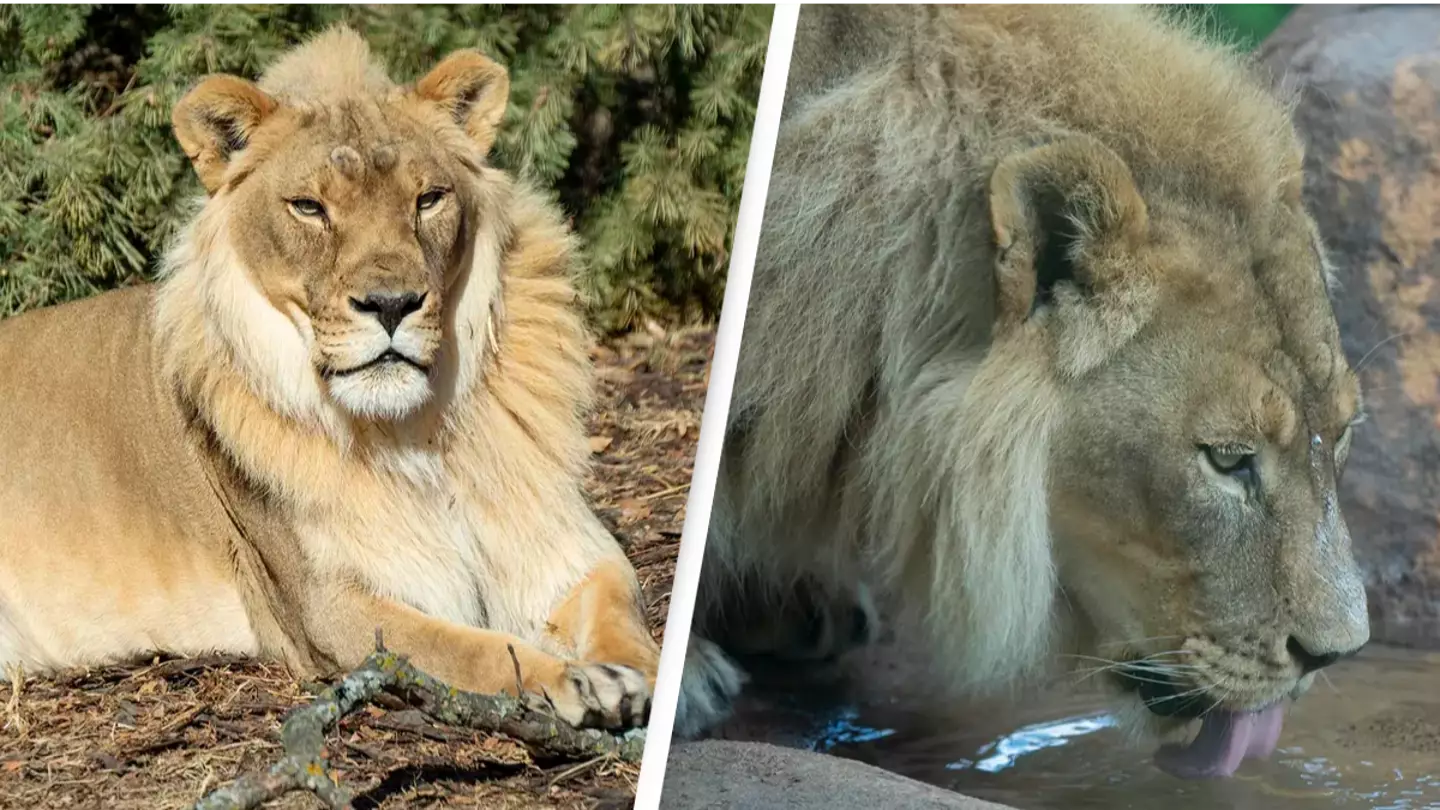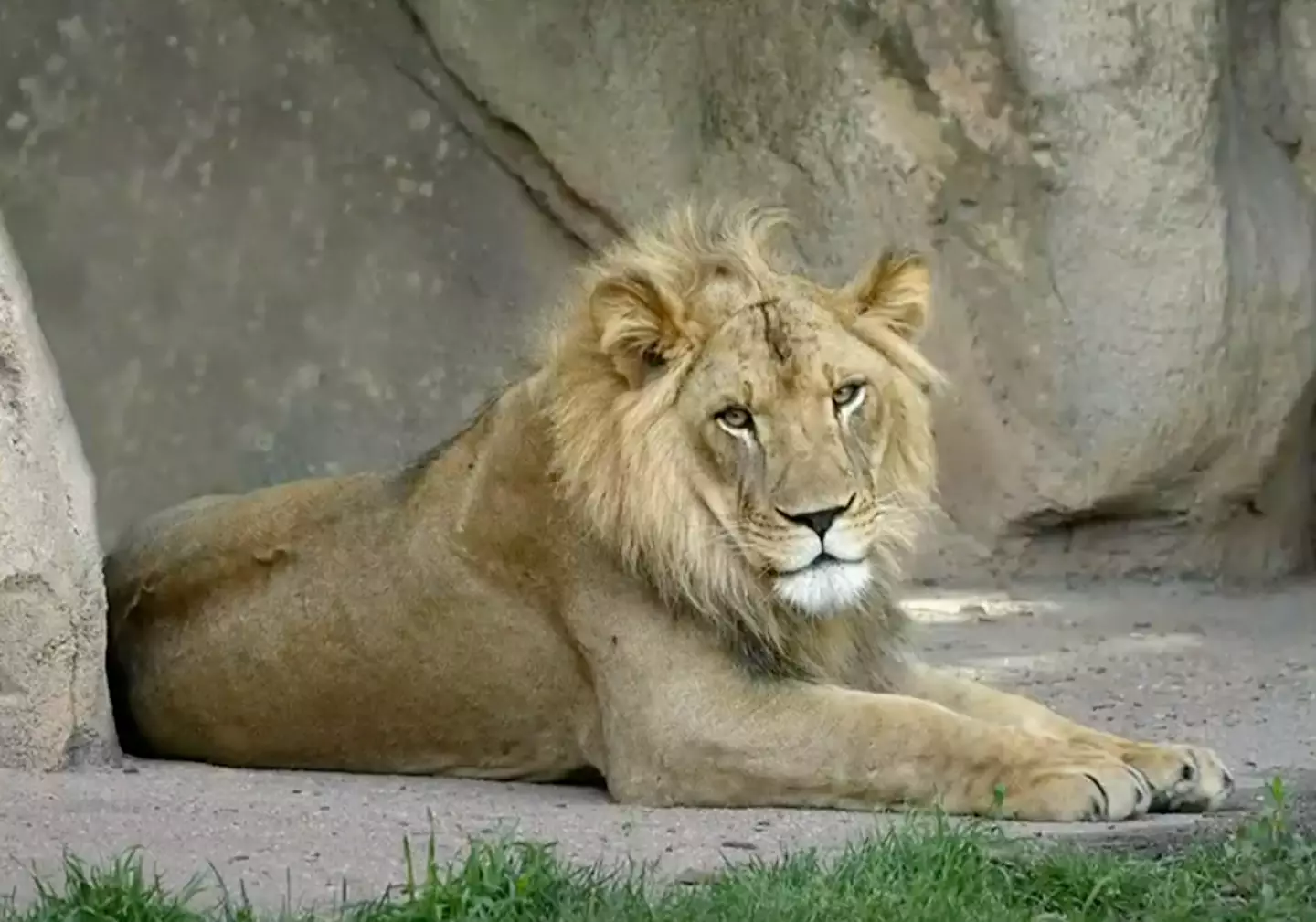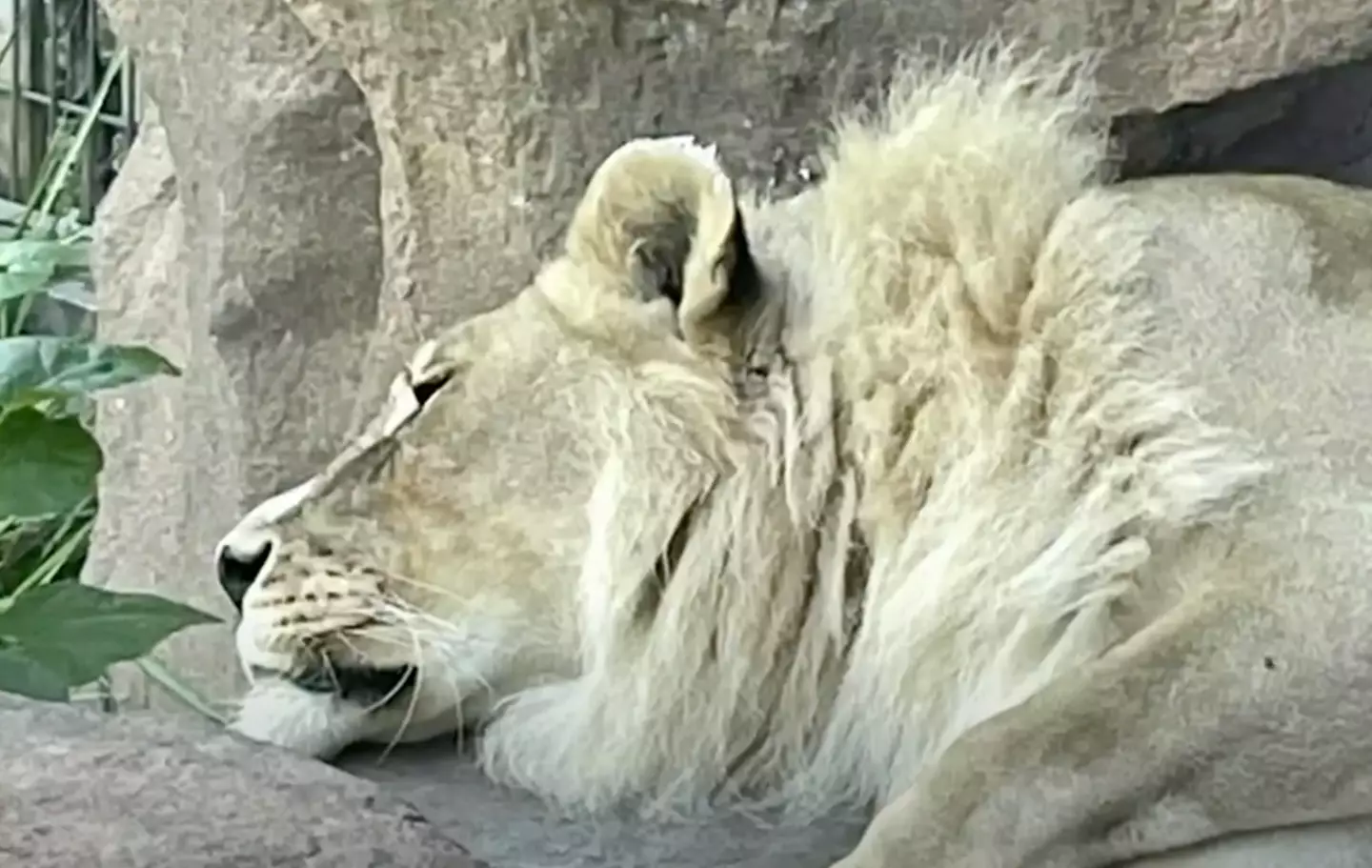
When an 18-year-old lioness started sprouting a mane, she left scientists completely baffled.
The king of the jungle is a symbol of strength and courage, famous for his luscious brown mane, which varies between different individuals and populations.
It may simply fringe the face or be full and shaggy, covering the back of his head, neck and shoulders, and continuing onto the throat and chest. Manes also vary greatly in color, with some seeming almost black, giving the big cat a majestic appearance.
Advert
The lioness, however, typically looks quite different from her male counterpart. Most of the time, female lions don't have manes and are instead a pale sandy colour all over.
But, of course, there is always an exception to the rule.
When Zuri, a lioness at Kansas' Topeka Zoo and Conservation Center turned 18, she started growing her own mane.
Advert
Zuri grew up at the zoo in a pride of three lions. When Avus, the only male in the pride passed away in 2020, keepers noticed that Zuri started growing a mane in a similar way to an adult male lion.
Experts say that Zuri's mane was unusual and nothing like a typical male lion's mane, being shorter and less full than that of her male counterparts.
“It’s extremely rare,” the zoo's animal curator, Shanna Simpson, told NPR at the time. “We had never even heard about this happening until we saw Zuri.”

But, while rare, the phenomenon has occurred a handful of times at zoos around the world, including a case in South Africa in 2011 and a 2018 case at the Oklahoma City Zoo.
Advert
Five cases of lionesses growing manes in the wild were also reported in Botswana in 2016 in the Journal of African Ecology.
Experts were unsure of exactly what caused Zuri's sudden hair growth but doubted it had anything to do with her trying to step into a male pride leader's paw prints.
Kris Everatt, a wild cat conservation scientist at conservation organization Panthera, told Live Science: "I don’t think there's really any kind of evolutionary [reason for this], either lack of males or too much competition with other females or anything like that... I think it’s just a random event."

One potential explanation for it all boiled down to Zuri's age. At 18 years old when the mane started growing, the lioness had exceeded the average lifespan of a lion in the wild - typically 15 or 16 years.
Advert
The hair growth may have been caused by hormonal shifts due to extreme age, as tests showed no sign of underlying health issues in the lioness.
"She’s just very weird-looking," Simpson said at the time.
Unfortunately, earlier this year, the Topeka Zoo announced that Zuri had passed away. The 'beloved lioness' was 19 years old.
“Over the past few months Zuri had been closely monitored due to the risk of kidney failure, a common ailment for geriatric cats of her age,” a spokesperson for the zoo said. “A month ago, Zuri started experiencing increased symptoms, which accelerated in the past few days.”
Advert
After a veterinary exam confirmed she was suffering from kidney failure, Zuri was humanely euthanized.
“Zuri was truly a lioness in charge, and her strong and independent personality was evident to all who knew her,” Simpson said on Facebook. “Zuri has always been a star in our hearts and we will miss her tremendously.”
